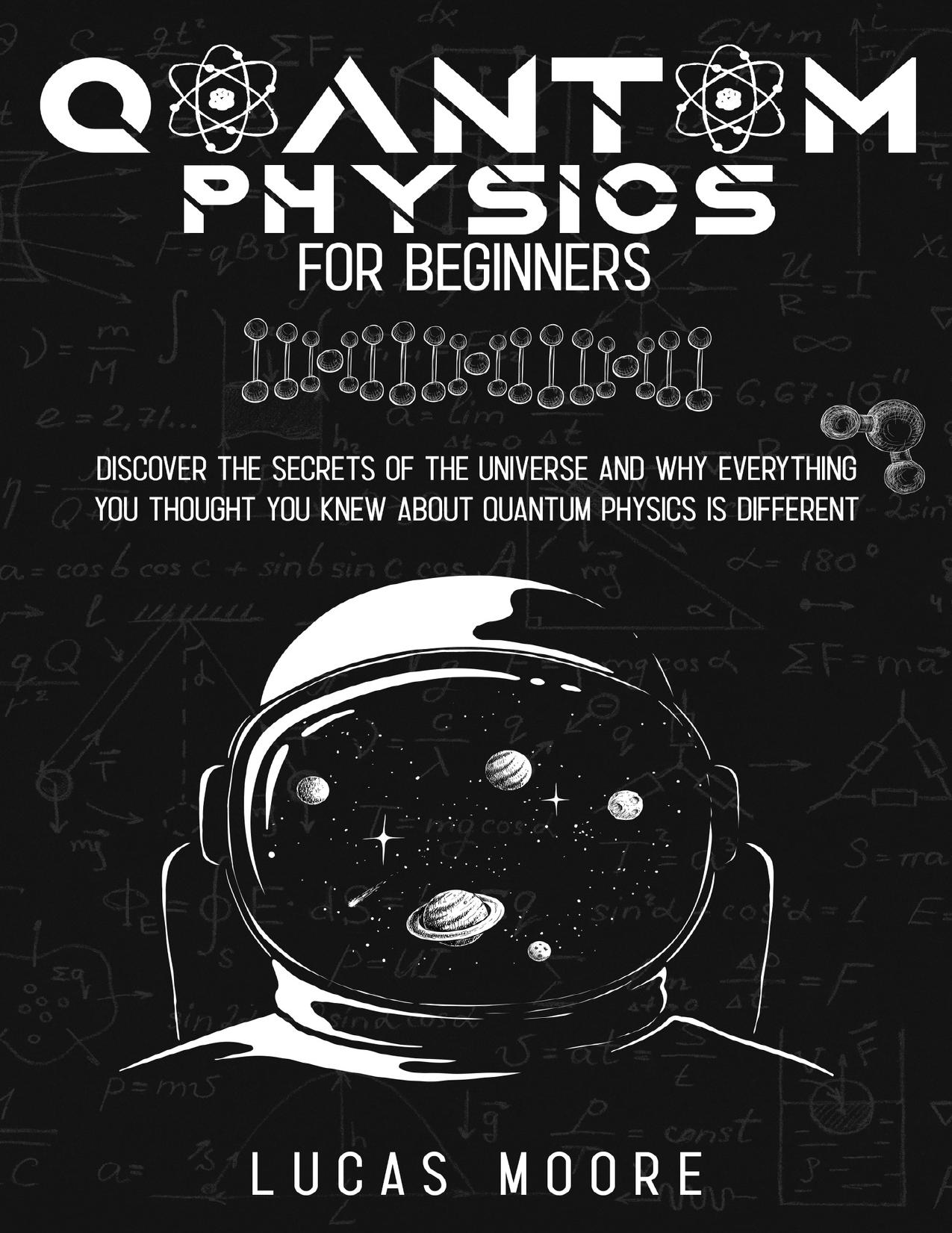Quantum physics for beginners: Discover the secrets of the universe and why everything you thought you knew about quantum physics is different by Moore Lucas

Author:Moore, Lucas [Moore, Lucas]
Language: eng
Format: epub, pdf
Published: 2020-10-03T00:00:00+00:00
Chapter 7: The Atom
Scientists have always tried to understand the shape and structure of an atom. A long time ago, people considered that all objects were made of indivisible things called atoms. But in the early 19th century subatomic particles â particles smaller than the known atoms â were discovered! Thus, everyone wanted to develop models to explain the atomic structure.
Structure
Joseph Thomson discovered the electron. An electron is a charged particle. Thomson was working with cathode ray tubes, the ones that are now used in CRT TVs. A CRT TV uses cathode ray tubes with a fluorescent screen at one of the ends. When an electron beam hits the screen, flashes of light are produced which we see as a picture.
These glass tubes have electrodes (metallic plates) fixed on the ends. Appropriate conditions are maintained, and high voltage is applied across the electrodes (just like you connect the two ends of a battery).
When Thomson used a cathode ray tube, he observed a sharp beam between the two electrodes. Thomson applied an external electric field and observed that the beam deflected towards the positive end of the external electric field as shown below:
Thomson deduced that the beam must be made of negatively charged particles. Electrons were finally discovered. But wait! There is moreâ¦
Since things around us were neutral in general, Thomson realized that the atom must also contain a positively charged particle to balance the negativity of the electron. This particle was discovered later and was named proton.
Proton was found to be much heavier than the electron because the beam made up of protons was very hard to deflect (very strong electric fields were used!)
His model is often called the plum-pudding model. In this model, electrons are embedded inside a positive sphere. The mass of the atom is uniformly distributed throughout the sphere. This model is shown in the image below: Nothing is perfect. In physics, theories are constantly being challenged and updated. Thomson's model of the atom was also tested with experiments. Rutherford, a New-Zealander, was performing advanced experiments with positively charged alpha particles and gold atoms.
With the help of his students, Rutherford designed an alpha particle experiment in which a beam of high energy alpha particles would collide with gold atoms kept at a distance. The result of the collision would be observed on a screen.
Rutherford concluded that Thomson's model was not the true picture of an atom. His experiment suggested that most of the atom was space! However, he also found that a few alpha particles were deflected at small angles (just like a curving ball).
Another important observation was that 1 in 20,000 alpha particles (a very small number), rebounded, which suggested that the alpha particle hit something really hard (dense) and bounced back! Rutherford collected all the results and created his picture of the atom. His model is often called the nuclear model of the atom.
A small ball of protons around which tiny electrons circle with love â interesting! The reason for this strange love is their electric field interaction.
Download
Quantum physics for beginners: Discover the secrets of the universe and why everything you thought you knew about quantum physics is different by Moore Lucas.pdf
This site does not store any files on its server. We only index and link to content provided by other sites. Please contact the content providers to delete copyright contents if any and email us, we'll remove relevant links or contents immediately.
The Complete Stick Figure Physics Tutorials by Allen Sarah(7252)
Secrets of Antigravity Propulsion: Tesla, UFOs, and Classified Aerospace Technology by Ph.D. Paul A. Laviolette(5229)
Thing Explainer by Randall Munroe(3838)
The River of Consciousness by Oliver Sacks(3488)
The Order of Time by Carlo Rovelli(3088)
How To by Randall Munroe(2956)
A Brief History of Time by Stephen Hawking(2902)
I Live in the Future & Here's How It Works by Nick Bilton(2892)
The Great Unknown by Marcus du Sautoy(2605)
What If?: Serious Scientific Answers to Absurd Hypothetical Questions by Randall Munroe(2576)
Midnight in Chernobyl by Adam Higginbotham(2424)
Blockchain: Ultimate Step By Step Guide To Understanding Blockchain Technology, Bitcoin Creation, and the future of Money (Novice to Expert) by Keizer Söze(2402)
Networks: An Introduction by Newman Mark(2292)
The Meaning of it All by Richard Feynman(2258)
Easy Electronics by Charles Platt(2242)
The Tao of Physics by Fritjof Capra(2195)
Midnight in Chernobyl: The Untold Story of the World's Greatest Nuclear Disaster by Adam Higginbotham(2119)
When by Daniel H Pink(2050)
Introducing Relativity by Bruce Bassett(2040)
